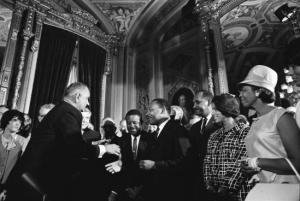“By gutting key provisions of the Voting Rights Act, the Holder decision significantly limited the ability of federal courts to regulate discriminatory practices in the states,” said Hahrie Han, the Anton Vonk Professor of Environmental Politics in the Department of Political Science.
Writing for the 5-4 majority in Shelby, Chief Justice John Roberts argued that the coverage formula was 40 years out of date, and conditions had so improved — mostly thanks to Shelby — that it was essentially obsolete.
Scholars of voting and civil rights, however, would disagree. Lipsitz noted that the act had been updated by Congress five times to keep pace with new efforts to disenfranchise African American voters — what he called “second generation” forms of discrimination.
“For example, in places where Blacks were once prevented from voting because of poll taxes, when the poll tax was eliminated election boards would postpone elections, close polling stations in minority neighborhoods, and even disestablish offices Blacks were likely to win,” he said. “Justice [Ruth Bader] Ginsberg speaks to these in her dissent in Shelby. Voter suppression has persisted systematically despite (and often in violation of) the Voting Rights Act.
“There is systematic voter suppression taking place, and the Roberts court in Shelby basically invited states to invent new forms of suppression,” Lipsitz continued. “The key to the preclearance provision of the Voting Rights Act was that individuals would not have to wait until disenfranchisement took place and then have to appeal to judges appointed by the very politicians who were elected because of voter suppression.”
Related Link:
News Date:
Monday, July 30, 2018
August 31, 2018 - 10:35am







